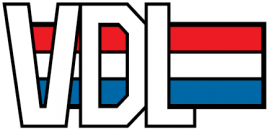Our Artificial Intelligence
A robot that has to cut leaves autonomously and therefore has to adapt continuously needs AI. With a vision system, a smart neural network and a correctly chosen camera, it is possible to recognize an object and its position. Using additional techniques and a plant model, we have developed a movement and end-effector strategy.
With enough images you can train AI algorithm so that the system recognizes the right things. Training is a new word for programming. However, you do not have to be a software specialist for this. Refining the algorithms, recognizing the plant, does require knowledge and insight. Once you have them, it is something that the grower could also improve on.
Artificial intelligence therefore makes the recognition software itself, and not a human being. AI software is therefore never 100% reliable, so you cannot cut 100% of the leaf or harvest a fruit with it. For example 95%, but that can sink in due to different light incidence, etc. Despite this limitation, it is the AI that makes the automation in the greenhouse possible.
Data
A robot generates a significant amount of data. All this data is stored in a Data Lake through our IoT platform. It can be enriched as desired and securely transmitted to various third parties. There are three types of data: machine data, application data, and training data. Machine data is analyzed to monitor the system, aiming for continuous performance improvement. For example, in energy management, calculating energy consumption may differ in practice, requiring load strategy and necessary capacity considerations.
Application data, of interest to growers, includes continuous measurements of temperature, light, humidity, and CO2. Analysis of this data allows conclusions to be drawn, adapting the cultivation process accordingly. While we don't default to measuring this raw data, it can be added. The raw data remains the property of the grower, who may seek assistance from a specialist to analyze and increase its value.
The third type is training data. Our robots log all visual material where points of interest aren't recognized with sufficient certainty by the vision system. This material is used for reinforcement learning of the neural network, resulting in a rapid learning curve for changing conditions as robots learn from each other's experiences.
Robot path planning.
A robot arm that moves from A to B is nothing new. An arm that must continuously adjust its movement and prevent collisions is the innovation. And that real time at maximum speeds. That is where the intelligence of our system lies. Ultimately, no one wants a robot to continuously hit the plant, so you get around it as much as possible.
End effector: accurate, fast and economical.
Accuracy is generally not a problem for a robot. In the greenhouse, however, the camera and vision system determine the inaccuracy. The robustness of the cutting system is therefore decisive. We have opted for a patented gripper that also stresses the plant as little as possible.
A robot can be very fast. On the one hand, the safety requirements limit the speed of movement of the cobot arms, on the other hand careful handling of the plant also limits the speed. The bottom line is that mainly the movement from leaf to leaf and the cutting cycle time Is critical. The vision system, the image processing are not in the critical path of the movement planning. We guarantee 1000 cuts per hour on average over 100m.
Economically feasible, because the variable costs of the system are very low. The variable costs and the depreciation of the investment give a robot hourly rate that is substantially lower than the wage costs. The speed of the system is essential and it will only increase. The software dominates, which means that an important part of the variable costs is in the maintenance and licensing costs of the software.


